
Euspira heros, the northern moon snail, is a species of large sea snail in the family Naticidae. This large snail is rather uncommon intertidally, but is much more common subtidally. This species, like all moon snails, feeds voraciously on clams and other snails.

Naticidae, common name moon snails or necklace shells, is a family of medium to large-sized predatory sea snails, marine gastropod molluscs in the clade Littorinimorpha. The shells of the species in this family are mostly globular in shape.
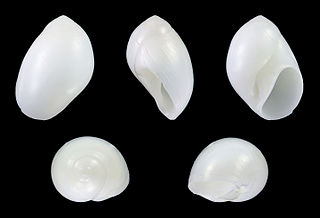
Polinices is a genus of predatory sea snails, marine gastropod molluscs in the subfamily Polinicinae of the family Naticidae, commonly known as moon snails.
Neverita aulacoglossa is a species of sea snail, a marine gastropod mollusc in the family Naticidae, the moons snails.

Neverita is a genus of medium-sized to large sea snails, marine gastropod molluscs in the subfamily Polinicinae of the family Naticidae, the moon snails

Natica is a genus of small to medium-sized predatory sea snails, marine gastropods in the subfamily Naticinae of the family Naticidae, the moon snails. The genus was erected by Giovanni Antonio Scopoli in 1777.

Euspira catena, previously known as Natica catena, common name the large necklace shell, is a medium-sized species of predatory sea snail, a marine gastropod mollusc in the family Naticidae, the moon snails.
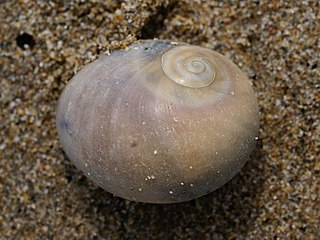
Neverita josephinia is a species of predatory sea snail, a marine gastropod mollusc in the family Naticidae, the moon shells.

Euspira is a genus of medium-sized sea snails, marine gastropod molluscs in the subfamily Polinicinae of the family Naticidae, the moon snails.
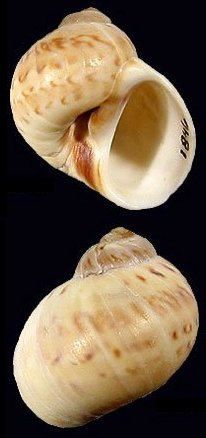
Euspira nitida, the common necklace shell, is a species of sea snail, a marine gastropod mollusc in the family Naticidae, the moon snails.
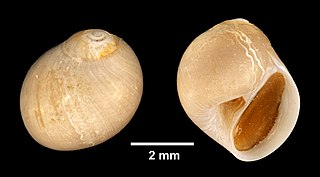
Polinices immaculatus, common name the immaculate moonsnail, is a species of predatory sea snail, a marine gastropod mollusk in the family Naticidae, the moon snails.
Euspira triseriata, the spotted moonsnail, is a species of predatory sea snail, a marine gastropod mollusc in the family Naticidae, the moon snails.

Mammilla melanostoma is a species of predatory sea snail, a marine gastropod mollusk in the family Naticidae, the moon snails.

Neverita didyma, common name the bladder moon snail or moon shell, is a species of predatory sea snail, a marine gastropod mollusc in the family Naticidae, the moon snails.
Euspira pallida is a species of predatory sea snail, a marine gastropod mollusc in the family Naticidae, the moon snails.

Polinices mammilla is a species of predatory sea snail, a marine gastropod mollusk in the family Naticidae, the moon snails.

Mammilla is a genus of predatory sea snails, marine gastropod mollusks in the subfamily Polinicinae of the family Naticidae, the moon snails.
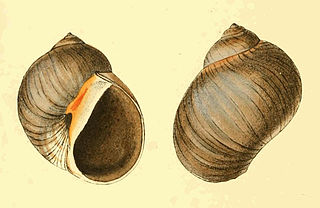
Conuber is a genus of predatory sea snails, marine gastropod mollusks in the family Naticidae, the moon snails.

Conuber sordidum is a species of predatory sea snail, a marine gastropod mollusk family Naticidae, the moon snails.
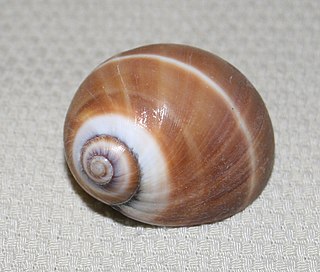
Polinices bifasciatus, or two-banded moon snail, is a species of gastropod mollusc. The animal was first described to science in a work authored by English biologists Edward Griffith and Edward Pidgeon. This was a multi-volume translation of George Cuvier's, Le Règne Animal (1830). The Griffith and Pidgeon work went beyond translation and added a supplement that included the description of Polinices bifasciatus. The description of Polinices bifasciatus is attributed to John Edward Gray. It reads, in its entirety, "Pale brown, with two narrow bands".



















